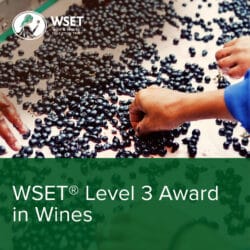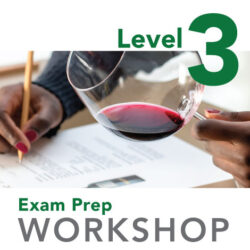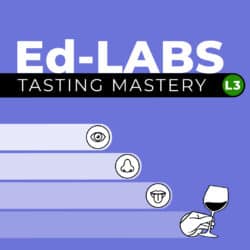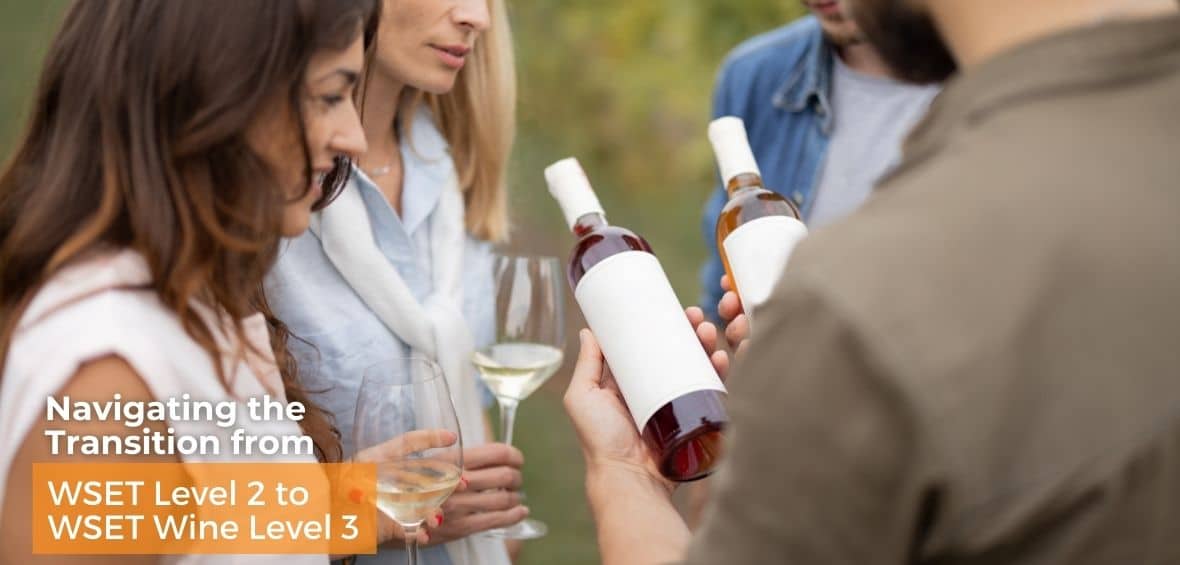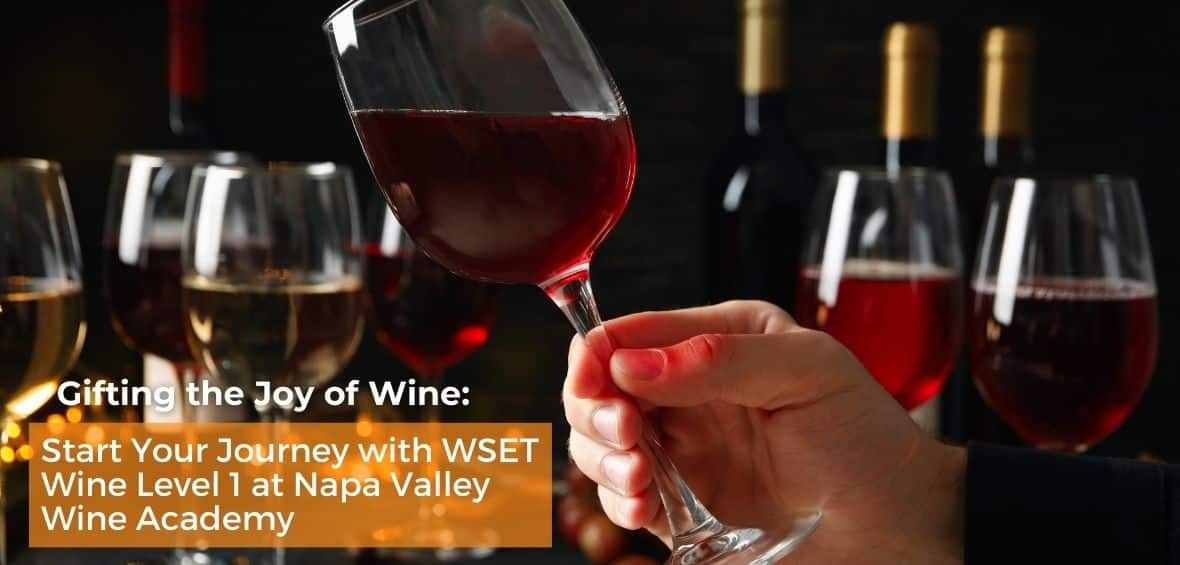WSET Level 3 Study Tips or How to Wrangle the WSET Level 3 Beast
First and foremost, Level 3 success depends on interactive studying.
Students often feel that if they read through the book once, or even twice, they have studied. To be successful on the WSET Level 3 exam, however, you must study interactively with the material in your study pack. What does this mean? It’s more than just highlighting key concepts (you’d pretty much be highlighting the entire book!)
We provide some examples of interactive studying here:
Winemaking Chapters in Study Book
Don’t just read the sections, but create lists of winemaking steps for the different wine styles.
The WSET has spent quite a bit of ink on different types of wine production in Chapters 8 and 9. There is a section on Producing High-Volume, Inexpensive Wines and another section on Producing Premium Wines. There is a section on winemaking for Aromatic Grape Varieties and on Less Aromatic Grape Varieties. Given the WSET’s attention to these sections, it is a good idea to create a summary list of the major production steps and options of each.
Recommended Lists to Create:
- Aromatic Grape White Winemaking
- Non-aromatic Grape White Winemaking
- High Production v Premium Production White Wine
- High Production v Premium Production Red Wine
- Sweet Winemaking options
- Sparkling wine production methods (Traditional, Transfer, Tank, Asti methods)
For example: Your list for Aromatic Grape White Winemaking should include things that winemakers do to retain and enhance primary fruit character and aromatics, such as frequently monitoring SO2 levels (to keep grapes and wine from oxidizing, which would reduce fresh fruit character) and cool fermentation temperatures (to retain the fresh, primary fruit aromas and flavors.)
Your summary list could look something like this:
Goal: Retain, enhance primary fruit character and aromatics/
Careful handling to retain fruit, floral aromas
Options:
- SO2 levels frequently monitored (to keep grapes and wine from oxidizing)
- Optional whole bunch pressing (less oxidation from broken skins for fruit purity)
- Clarification: avoids skin/particle flavors that could mask fruit in juice
- Inert vessels (i.e., Alsace and some German Rieslings may be in old oak)
- Cool ferment encourages primary fruit/slow steady
- MLF avoided – seeking high acidity, and want to avoid buttery flavors
- Bottled soon after harvest (some German, Alsatian Rieslings matured in old oak for up to one year)
- No new oak flavors
- Many rarely blended with other varieties (i.e., Riesling)
However, don’t stop there! Keep creating summary lists for easy review over morning coffee or during a lunch break at work.
Production Methods
The WSET loves specialty wines such as Tokaji Aszu and Amarone. Know the winemaking steps for specialty wines that they discuss in the book. This includes the different production methods for Fortified wine styles as well as Sparkling wines. A past NVWA blog post provided key steps for Sparkling production methods, but try creating your own list before peeking.
Once you have your production method/winemaking lists, you can refer back to them frequently – and you will want to. Once you get to the regional chapters, you will see that these sections do not often include winemaking details. In the regional chapters, for example, you may read that a wine is made in a fresh, fruity style, without further explanation. You will need to infer and go back to the winemaking sections to understand the potential winemaking steps.
Make a note of Regional References in Winemaking Chapters.
When a particular region is noted in the winemaking chapters, add it to a separate sheet of paper, which will then become your summary sheet on that region (more on that later).
For example, on Page 50 of the study book, under Pre-bottling Maturation, you are told that premium Australian Rieslings rarely benefit from any contact with oak or oxygen and will be stored before bottling in inert vessels. You’ll want to know that when you get to the regional Australia chapter (chapter 39, page 164).
SOMETIMES specific winemaking procedures are mentioned in the regional chapters, but not for every wine style, and it is usually not the whole story. When you get to that Australia chapter, you will see Riesling listed under the White Varieties section (page 165.) While they provide a bit of style information here (i.e., wines are unoaked), they do not include the full story. Even when the classic regions for Rieslings, such as Clare Valley and Eden Valley, are covered later in the Australia chapter, there is not a drop of info on winemaking procedures.
So, to understand Australian Riesling winemaking, you’ll need to make those inferences. You’d start with the knowledge that Riesling is an aromatic grape variety. And you’d then refer to information you gleaned in Chapter 9: White Winemaking, and especially from the section there called PRODUCING PREMIUM WHITE WINES: Aromatic Grape Varieties; Sauvignon blanc and Riesling. You could also just refer back to the handy summary sheet on Aromatic Grape White Winemaking that you created when you read the winemaking chapters.
Doing this type of exercise will make sense once you see a WSET example of a Short Written Answer exam question, which asks about Southern Rhône rosé winemaking. If you go to the regional section, there is no help there on how these wines are made. Refer back to the winemaking section for rosés, and there it will be. (We provide this WSET Short Written Answer handout to all of our Level 3 students.)
Regional Summary Sheets
When you get to the regional chapters, it is wise to create a summary sheet for each region, so you have – in one place – the main information on that region. This should include: climate, topography (mountains? bodies of water?), any special soils, principal grape varieties, styles of wine, including specialty styles (ie Veneto’s Amarone, Recioto and Ripasso), any special viticulture and vinification notes, and possible notes about the market/demand for a region’s wines (very limited in the book). NOT all of these categories will be covered in each region; know what is included in the book. Does this mean your book becomes for a best friend for the duration of your study time? YES.
You could start with a copy of a map of the region and write this summary information right on the map. See more on maps below.
Memorization is still needed!
Maps
Maps can often hold the answers! If you use maps when you study, you can usually call up a mental picture of that map when you are taking the exam. This can help lead you to answers that you may be struggling with. For instance, if you are asked about the climate of Bordeaux, and pull up an image of the map with the Atlantic Ocean just to the west, then you will likely recall that Maritime is the best answer. Or if you need to write what the signature grape of Rias Baixas is, and you cannot remember, it may help to call up an image of the map of Spain and recall that the region is in the northwest corner. That makes you recall that the climate is mitigated (cooled) by ocean influence…..which helps you recall that white wines are key here… and that leads you to …. bingo! You can see in your handwriting, in that map in your mind, the Albarino grape as the key grape of the region.
The act of actually writing something down goes a long way towards recall. So keep testing yourself with makeshift maps. Whether you google a map outline of Italy and print it out for the exercise, or hand draw a distorted but workable outline of the country (no aesthetic judgments here!), it does not matter. Make yourself write in the 20 main regions of Italy, then go a step further and test yourself on the key red and white grape varieties in those regions.
You may find map questions on the exam (where they point to a region, and you need to name it)!
Grape and Wine Style Snapshots
You are going to walk away with a fancy certification in the wine industry when you pass the Level 3 exam, and one thing you should retain are snapshots of grape varieties and wine styles. Say you use your certification and open up a fine wine shop. Customers will expect you to give a quick ‘elevator speech’ or explanation on what a Barossa Shiraz will taste like, or what to expect from a Torrontes from Argentina.
To wrangle all of these, you could add a few style descriptors to your Regional Summary sheets. You will be adding the principal grape varieties of those regions anyway, right? So you can add a quick note such as ‘intense fruity, floral perfume. Medium body, medium acidity – stone fruits, melon’ next to Torrontes on your Argentina Summary Sheet.
Regional Switch Short Written Answer Questions
Another type of short written answer question is what we call the ‘regional switch.’ A pretend customer, for instance, is looking for an alternative wine to Meursault, and from Australia. The WSET wants you to recommend alternative wines that are similar in style, quality and price; and to account for the factors that make your choice appropriate. If there are fundamental differences, despite the similarities, they want you to point that out too. One good answer is Margaret River Chardonnay. The two regions generally share a moderate maritime climate, although some areas of Margaret River can be a bit warmer. The regions both produce premium wines; and Margaret River producers generally let their Chardonnays go through malolactic fermentation and barrel age their wines for complexity, as is typical for the premium whites of Meursault and the Cote d’Or.
Given this, the student who really wants to excel may create a chart of similar styles between classic wines of the various countries covered in the Level 3. Is this easy? No. But you may just be able to hang up that certification with a big ‘ol Distinction listed on it.
One way to keep track of similar styles across countries is to refer back to the styles you added to your regional summary sheets, once you have completed these.
Practice with Memorization:
For extra exam prep, we have created a page on Quizlet, where you will find more than five hundred questions:
NVWA WSET LEVEL 3 flashcards
And of course, we provide further study tools once you start a class with us. Wrangling the course content into lists and summaries will go a long way towards empowering you to ace the exam.
You might also be interested in:


